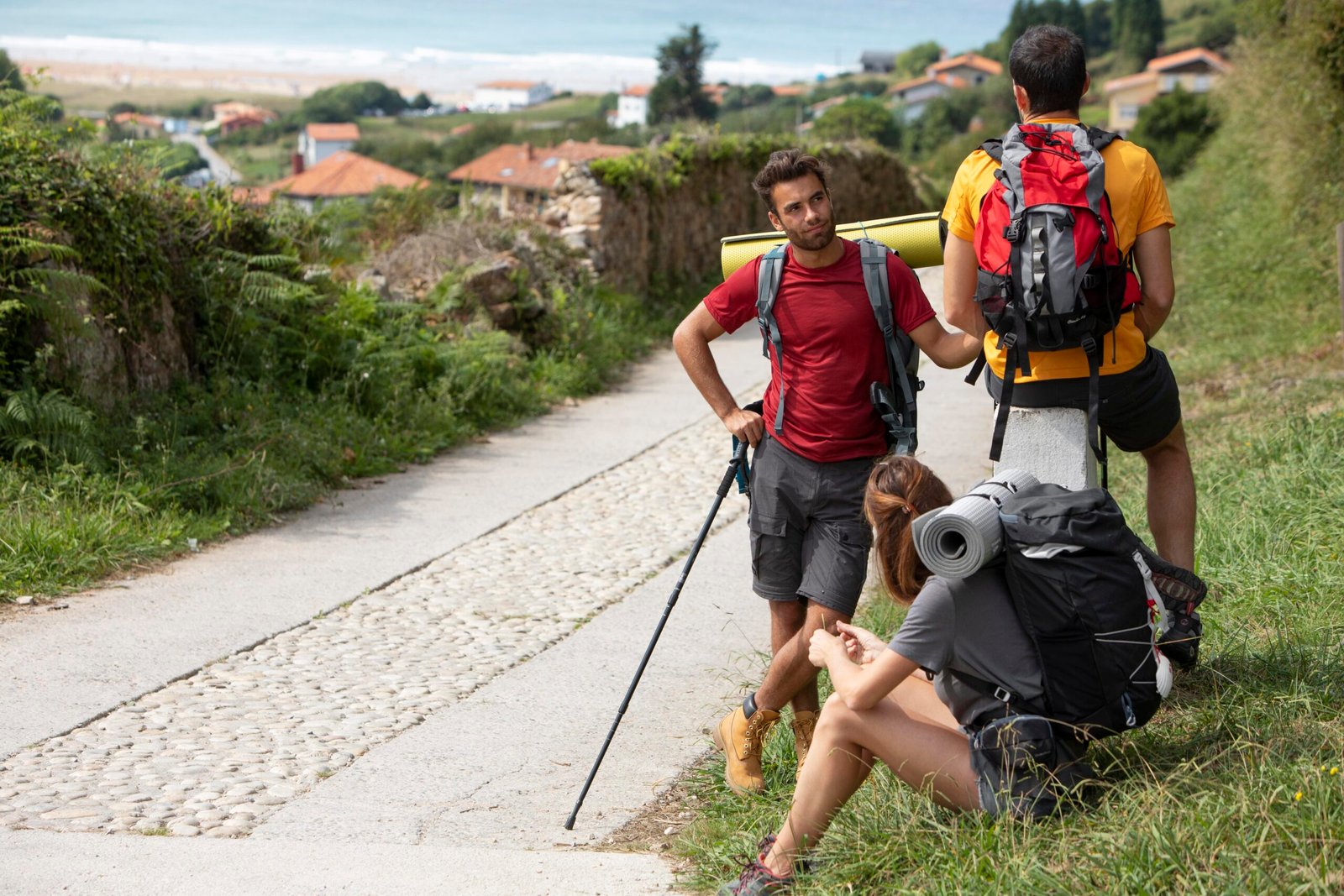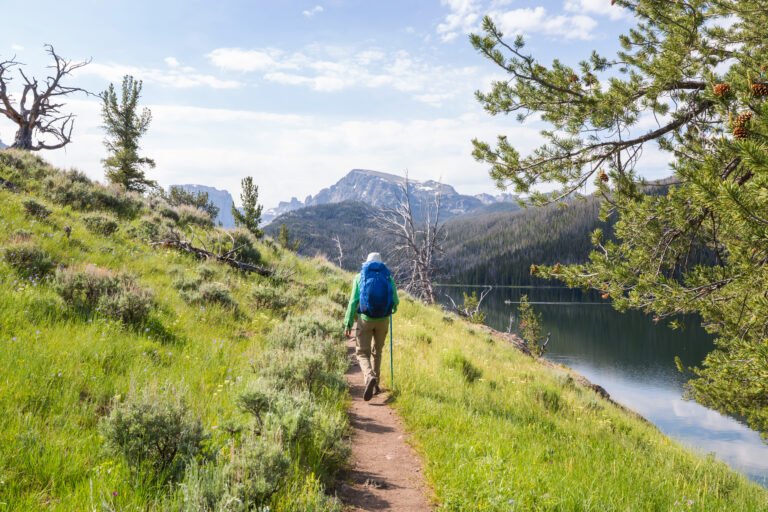Urban Hiking: Discovering Nature within City Limits
Explore the best urban hiking trails and discover how to find nature within city limits. Learn tips and routes for your next adventure.
What if your next adventure didn’t require leaving the city? Imagine towering redwoods shading subway stations or hidden trails winding past skyscrapers. Urban landscapes hold more natural surprises than most realize—if you know where to look.
Major U.S. metros are embracing green corridors that blend ancient ecosystems with modern infrastructure. Take San Francisco’s Crosstown Trail, a 17-mile route stitching together parks, forests, and quiet neighborhoods. This path reveals wildflowers blooming beside transit hubs and century-old trees framing downtown views.
These trails aren’t just scenic shortcuts—they’re gateways to physical challenges and mental escapes. A midday hike through urban green spaces can lower stress while building stamina. Cities like New York and Chicago now prioritize accessible routes that turn commutes into discoveries.
This article unpacks how to find these hidden gems, from historic pathways to modern conservation projects. You’ll learn practical tips for navigating urban hiking experiences, along with stories of trails that redefine city exploration. Ready to see your metro area through a new lens?
The Allure of Urban Hiking
Concrete jungles hide more green secrets than most commuters notice. Between subway stops and office districts lie winding paths that connect centuries-old trees to modern landmarks. Let’s break down what makes metro trail systems irresistible to explorers seeking fresh air without leaving the city.

Why Explore City Trails
Metro routes like San Francisco’s Crosstown Trail prove adventure lives where sidewalks meet soil. This 17-mile route weaves through historic parks and residential areas, offering skyline views between redwood groves. Similar discoveries await in New York City, where the GWBridge-to-Inwood loop transforms a commute into a 10-mile riverside journey.
Local initiatives have reshaped forgotten spaces into accessible parks. Chicago’s 606 Trail—built on retired railway tracks—now draws cyclists and walkers daily. These projects reveal how creative planning turns overgrown lots into community hubs.
Benefits of Discovering Nature in Cities
A 2023 National Geographic study found that 45 minutes on city trails lowers stress hormones by 28%. Routes like Central Park’s Ramble prove you don’t need mountain vistas for mental refreshment—hidden ponds and rocky outcrops work just as well.
Volunteer-led cleanups have made these paths safer and more inviting. As The New York Times reported, neighborhood efforts in Denver added 12 new miles of walkable greenways last year alone. Whether you’re dodging squirrels or spotting street art, every step blends exercise with unexpected joy.
Discovering Urban Trails and Routes
Cities hide pathways where skyscrapers meet wildflowers and historic bridges frame forested valleys. These blended landscapes offer route options ranging from polished park loops to rugged dirt tracks—all within subway access.
Popular Urban Trails Explored
San Francisco’s Crosstown Trail stretches 17 miles from Candlestick Point to Land’s End, passing community gardens and the Golden Gate Bridge. Seattle’s Discovery Park Loop mixes coastal bluffs with quiet parks, while New York’s 10-mile GWBridge-to-Inwood path reveals Hudson River panoramas.
These trails showcase diverse surfaces. One moment you’re on smooth sidewalks, the next navigating root-crossed paths. Chicago’s 606 Trail proves retired railways can become vibrant corridors buzzing with cyclists and muralists.
Mapping Hidden City Paths
Free tools like Gaia GPS help pinpoint lesser-known routes. Overlay public transit stops on Google My Maps to design loops connecting green spaces. Look for subtle markers—a staircase between buildings or a trailhead behind a bus stop.
Local hiking groups often share secret pathways through neighborhood forums. In Denver, volunteers recently mapped 12 new miles of urban paths using abandoned alleys and creek beds. Always check surface conditions and daylight hours before exploring uncharted areas.
Urban Hiking Tips for the Modern Explorer
City explorers know blending street smarts with outdoor prep unlocks hidden routes. Whether tackling the Crosstown Trail or Brooklyn’s greenways, smart planning turns concrete jungles into playgrounds.
Gear Essentials and Safety Guidelines
Experienced trekkers swear by three non-negotiables: sturdy shoes, hydration, and light layers. Trail runners outperform sneakers on mixed surfaces, while collapsible water bottles save space. San Francisco adventurer Mia Chen credits her SPF 50 hat for completing 12-mile routes without sunburn.
| Essential Gear | Purpose | Pro Tip |
|---|---|---|
| Moisture-wicking socks | Prevent blisters | Wool blends work in all seasons |
| Compact first-aid kit | Minor injuries | Include blister pads |
| Reflective armbands | Visibility at dusk | Attach to backpacks |
Always carry a power bank. New York City trail volunteers report 30% of hikers need phone rescues when batteries die near subway stops.
Navigational Resources and Apps
AllTrails’ urban layer reveals quiet paths bypassing busy streets. For real-time updates, hikers like Denver’s “TrailBlazers” group use Gaia GPS to share reroutes around construction zones.
Bookmark transit stops on Google Maps before starting. Chicago’s 606 Trail connects to six bus lines—knowledge that saved hikers during last summer’s sudden downpour. Free park department maps often show drinking fountains and restrooms too.
Pro tip: Load offline maps. When cell service drops near parks, apps like Maps.me keep you oriented using GPS alone.
Integrating Cityscapes with Nature
Metro areas reveal their true character where cobblestone meets canopy. Historic landmarks and green spaces form living timelines, connecting modern commuters to layered stories beneath their feet. These hybrid landscapes transform routine walks into journeys through time and ecology.
Urban Parks and Historic Landmarks
San Francisco’s Golden Gate Park demonstrates how 1,017 acres can stitch together urban life with coastal forests. Its 10-mile loop passes Dutch windmills from 1903 and AIDS Memorial Grove—a testament to community resilience. Boston’s Emerald Necklace links 7 parks across 6 miles, designed by Frederick Law Olmsted in 1878 to provide breathing room in crowded neighborhoods.
These spaces serve as vital connectors along city trails. New York’s Central Park acts as a central hub for five major routes, including the 6-mile Harlem Meer path. Volunteers recently restored its North Woods section, blending 19th-century design with native plantings.
| Park | Historic Feature | Trail Connection |
|---|---|---|
| Golden Gate Park | 1894 Conservatory | Crosstown Trail |
| Emerald Necklace | Olmsted’s Design | Freedom Trail |
| Central Park | Bethesda Terrace | Harlem Meer Loop |
Municipal projects now prioritize green corridors between landmarks. Chicago’s 606 Trail incorporates 12 artistic installations along 2.7 miles of elevated railway. These efforts reduce noise pollution by 40% while creating educational pathways, according to recent urban planning studies.
Walking these routes offers dual rewards: fresh air and history lessons. Next time you pass a weathered statue or hidden garden, remember—you’re treading where generations sought solace and celebration.
Innovative Urban Trail Initiatives
Grassroots efforts are reshaping how cities connect people to nature. Volunteers and city planners now collaborate to transform forgotten spaces into vibrant corridors. These projects prove adventure thrives where creativity meets community action.
Volunteer-Led Trail Developments
San Francisco’s Crosstown Trail began as a citizen-led idea in 2017. Over 300 volunteers mapped the 17-mile route linking parks and staircases. The New York Times praised its “ingenious use of existing infrastructure” in 2022.
| City | Project | Community Impact |
|---|---|---|
| Boston | Walking City Trail | Connects 7 neighborhoods |
| Chicago | The 606 Expansion | Added 12 native plant species |
| Denver | High Line Canal | 71-mile shaded corridor |
Instant Urban Trail Concepts
Boston’s pop-up paths demonstrate how instant urban hikes require minimal budgets. Temporary markers guide explorers through hidden alleys and riverbanks. National Geographic featured these “guerrilla wayfinding” efforts in their 2023 cities issue.
Sustainable Practices in Urban Exploration
Chicago’s trail builders use permeable pavement to reduce runoff. San Francisco’s teams plant drought-resistant shrubs along steep routes. These methods protect local ecosystems while creating durable paths.
Want to start a trail project? Partner with local parks departments and use free mapping tools. Your sidewalk could become someone’s favorite discovery route tomorrow.
Inspiring Stories from Urban Hikers
When Bob Siegel first sketched the Crosstown Trail on a napkin in 2017, he envisioned a 17-mile thread connecting San Francisco’s wild edges. Today, over 15,000 explorers walk this route annually. “It’s not just dirt under your shoes,” says Siegel. “You’re tracing the city’s heartbeat.”

Local Explorers and Trail Builders
Retired teacher Maria Gonzalez transformed a neglected Bronx alley into a blooming park path. Her team planted native species and added benches. “Kids now spot butterflies instead of trash,” she shares. Similar stories echo nationwide:
- Denver volunteers converted 4 abandoned lots into pollinator-friendly trails
- Seattle’s “Stairway Walks” group mapped 150 public staircases into scenic loops
- Chicago’s 606 Trail saw 300% more users after adding night lighting
Community Impact on Urban Life
NYC’s GWBridge-to-Inwood route reduced local obesity rates by 18% in three years. Cafés along the path report 40% higher weekend sales. “These trails stitch neighborhoods together,” says Brooklyn resident Jamal Carter. His weekly “Pizza & Parks” hikes introduce newcomers to green spaces.
From cleaner air to stronger bonds, city hiking initiatives prove concrete and canopy can thrive together. As Siegel says: “Every step forward leaves a mark.”
Maximizing the Urban Hiking Experience
Exploring city trails requires more than sturdy shoes—it demands smart strategy. Successful adventurers combine digital tools with local knowledge to create seamless journeys through concrete and green spaces alike.
Planning and Mapping Your City Hike
Start with Google My Maps to layer parks, transit stops, and points of interest. Denver hikers use this method to connect light rail stations with the 71-mile High Line Canal. Pro tip: Bookmark water fountains and public restrooms along your route.
Consider these elements when designing your path:
- Peak foot traffic times for busy areas (avoid Midtown Manhattan at 5 PM)
- Mixed terrain options within 1-2 miles of transit hubs
- Alternative exit points every 0.5 miles for flexibility
Balancing Adventure and Accessibility
Seattle’s “Trail Mix” initiative proves challenging routes can coexist with ADA-compliant paths. Their dual-path system at Discovery Park offers both steep inclines and paved overlooks. Follow this approach with a simple checklist:
| Adventure Factor | Accessibility Need | Solution |
|---|---|---|
| Uneven terrain | Smooth surfaces | Pack foldable trekking poles |
| Long distances | Rest breaks | Map benches/cafés every mile |
| Street crossings | Clear signage | Use apps with audio navigation |
Chicago’s 606 Trail users save routes offline for unexpected closures. Carry a transit card—you might end your hiking day early to explore a historic district discovered en route. Remember: The best plans leave room for surprise.
Wrapping Up the Urban Trail Journey
Your next discovery might be steps from your doorstep. From San Francisco’s 17-mile trail networks to Chicago’s elevated railways-turned-parks, cities prove concrete and nature coexist beautifully. These paths offer more than exercise—they reshape how we experience metro areas.
Local projects show what communities achieve together. Volunteers transformed forgotten spaces into vibrant corridors where neighbors connect. Studies confirm time on city trails lowers stress while boosting neighborhood pride.
Ready to explore? Lace up shoes and download a trail app. Every corner holds surprises—a hidden garden behind skyscrapers or sunrise views from a historic bridge. Share your finds online to inspire others.
As trail networks expand, so do opportunities for adventure. Whether you seek quiet reflection or urban exploration, your city awaits. The journey begins where sidewalk meets soil. For more articles, see here.
Urban Hiking: Discovering Nature within City Limits From San Francisco’s 17-mile trail networks to Chicago’s elevated railways-turned-parks, cities prove concrete and nature coexist beautifully. These paths offer more than exercise—they reshape how we experience metro areas. As urban hiking gains popularity, individuals find solace in nature while surrounded by the urban landscape. Exploring city trails presents a unique opportunity to connect with nature without leaving the city.




